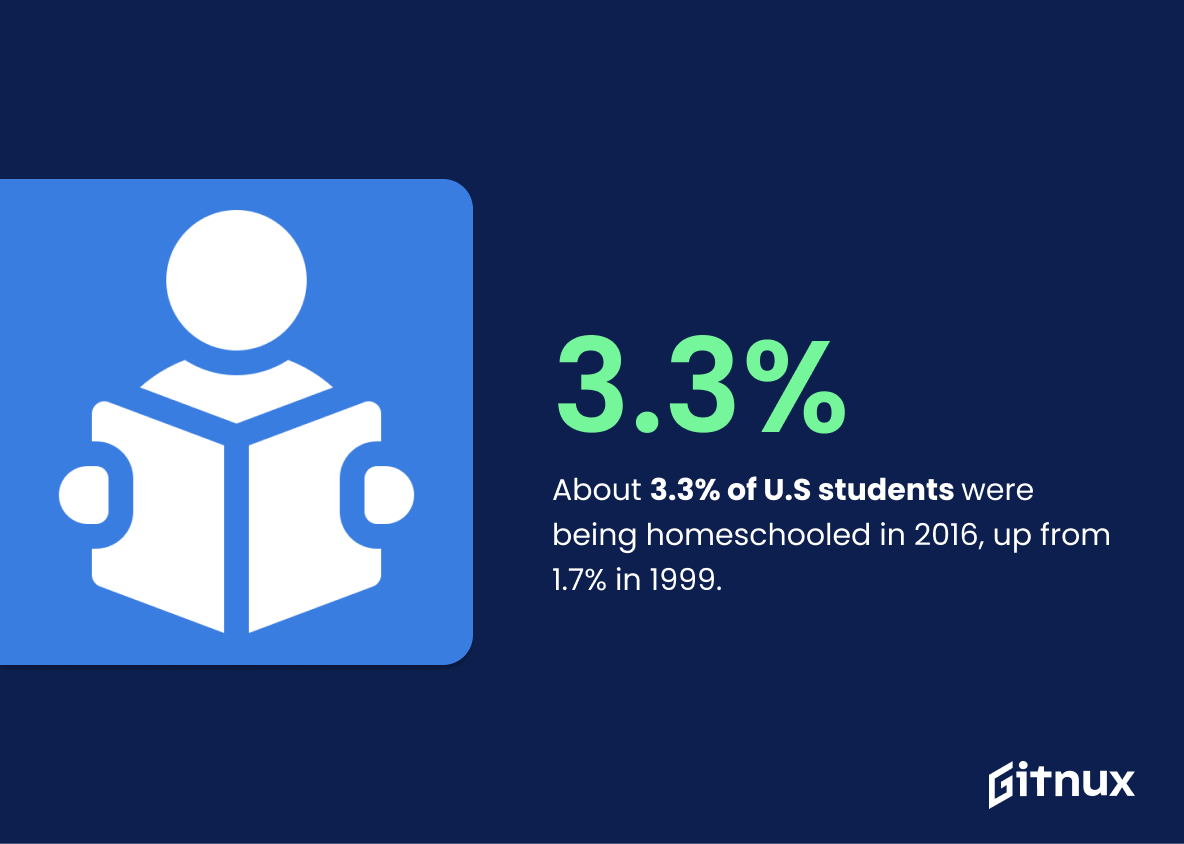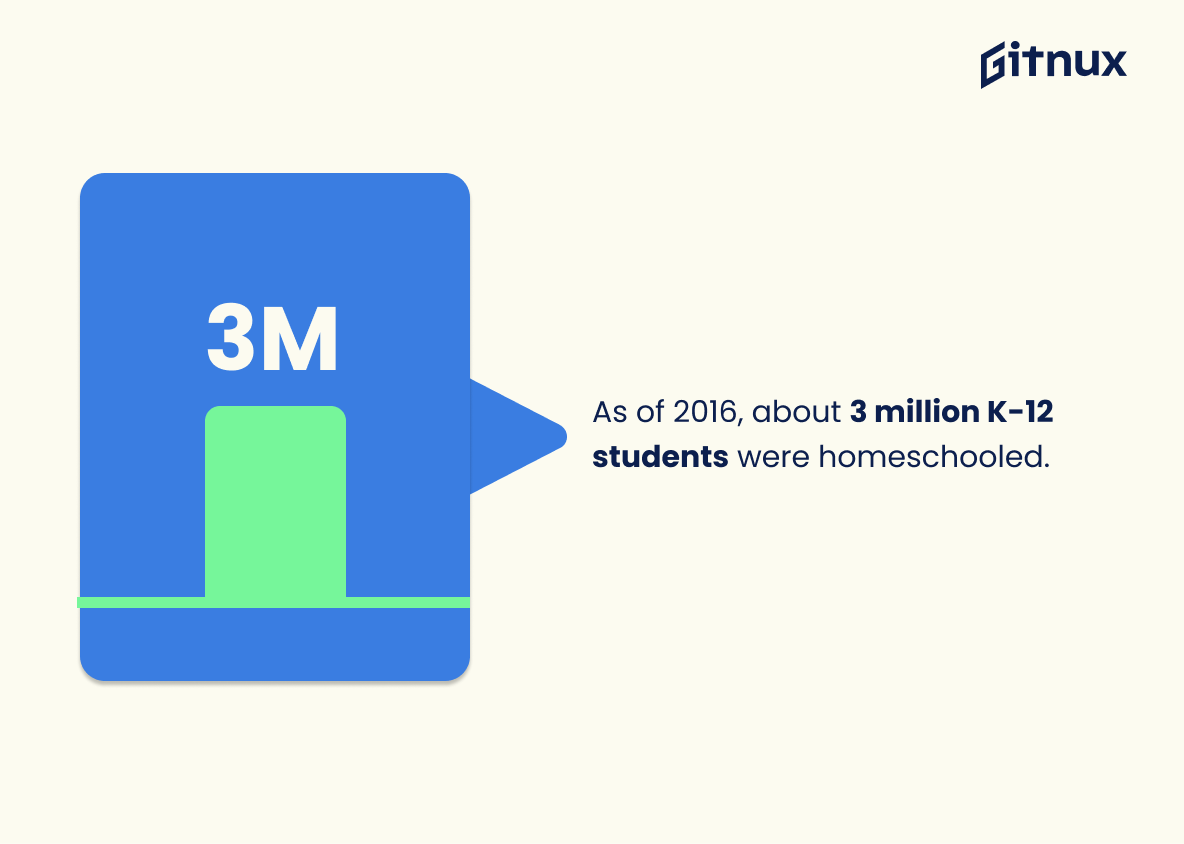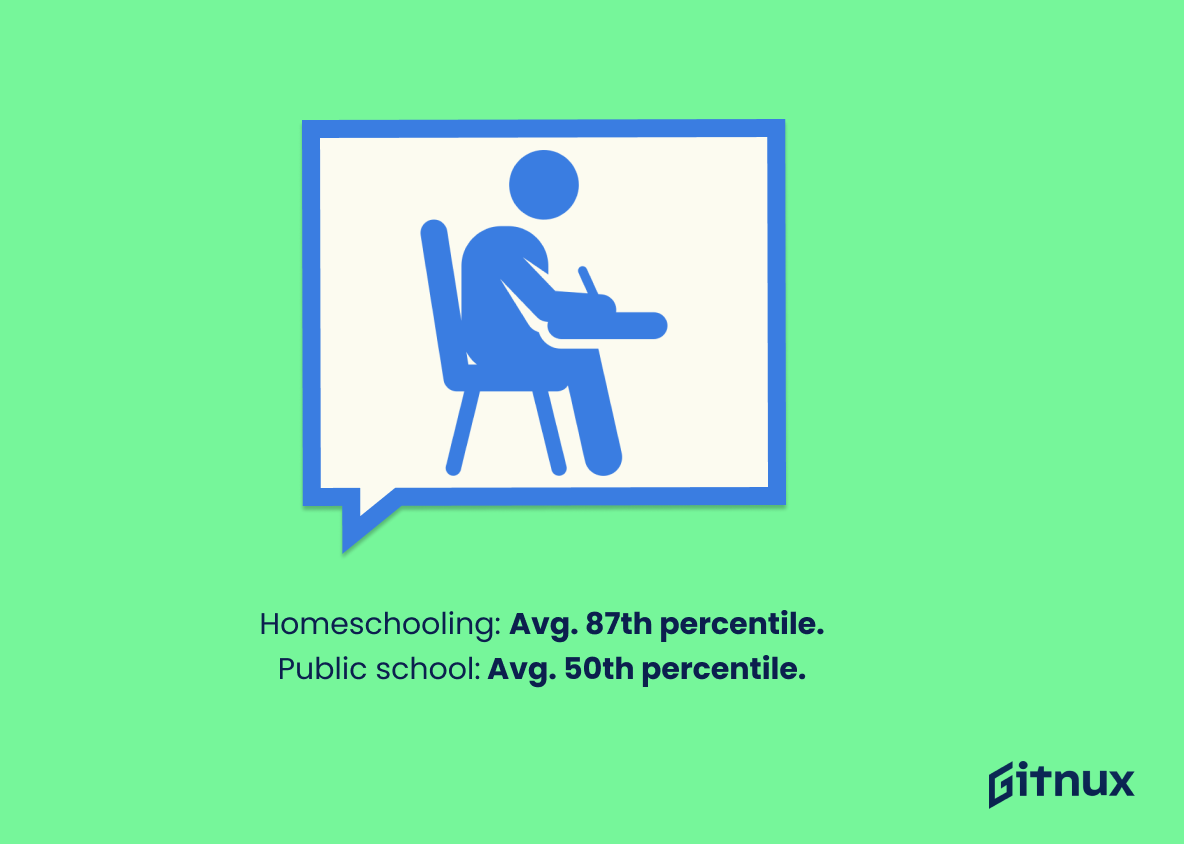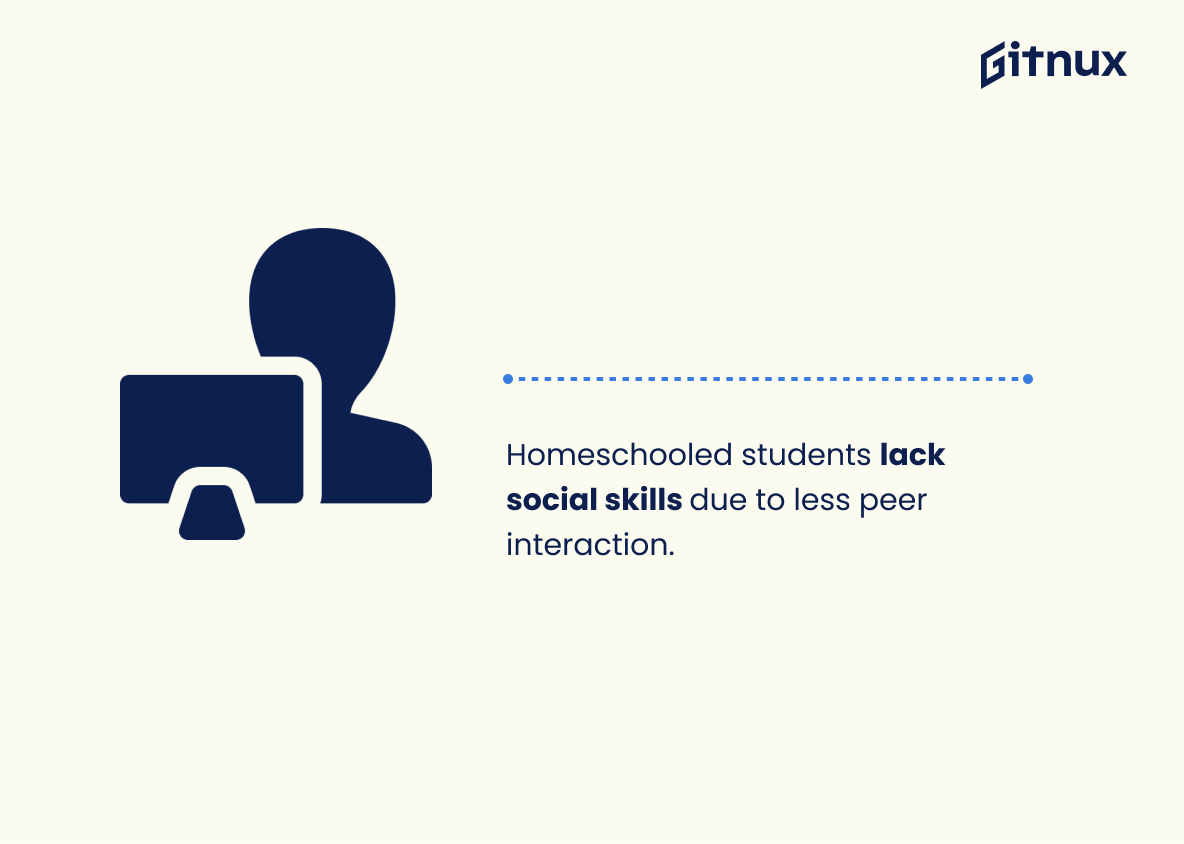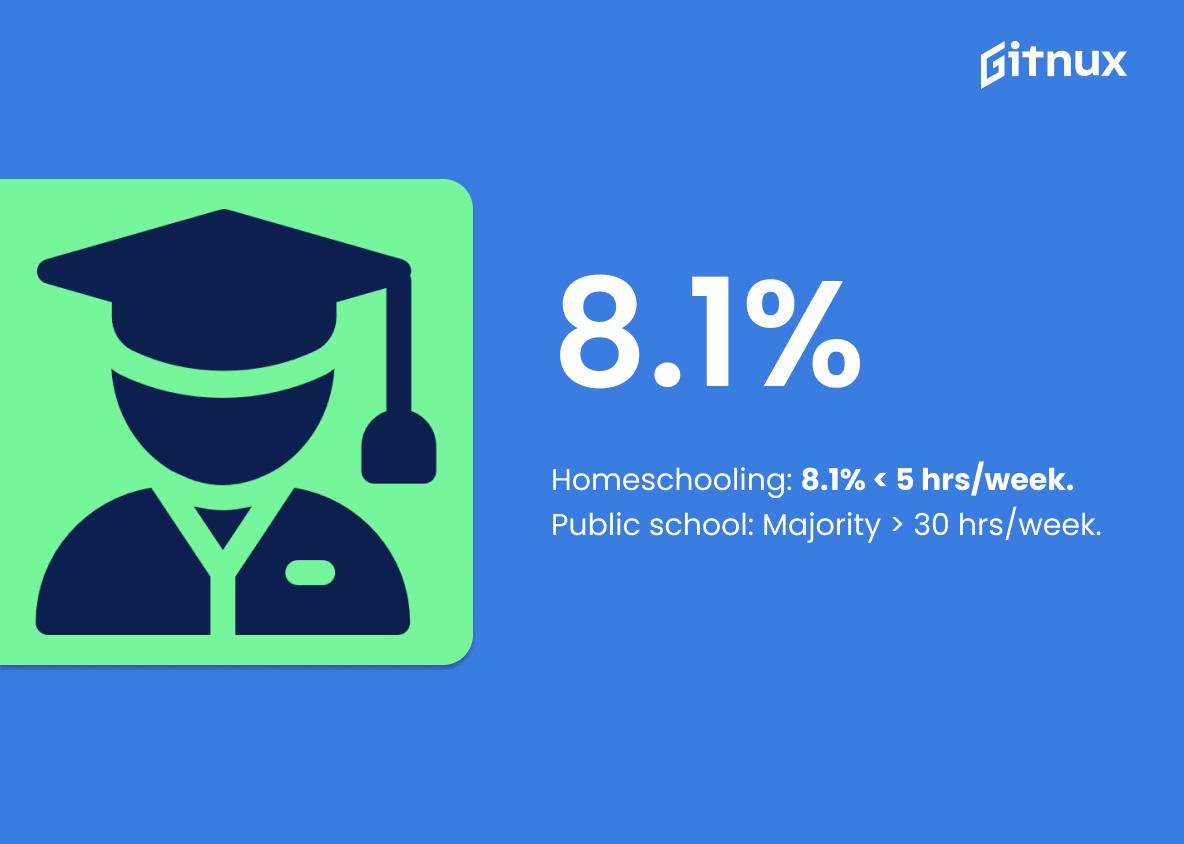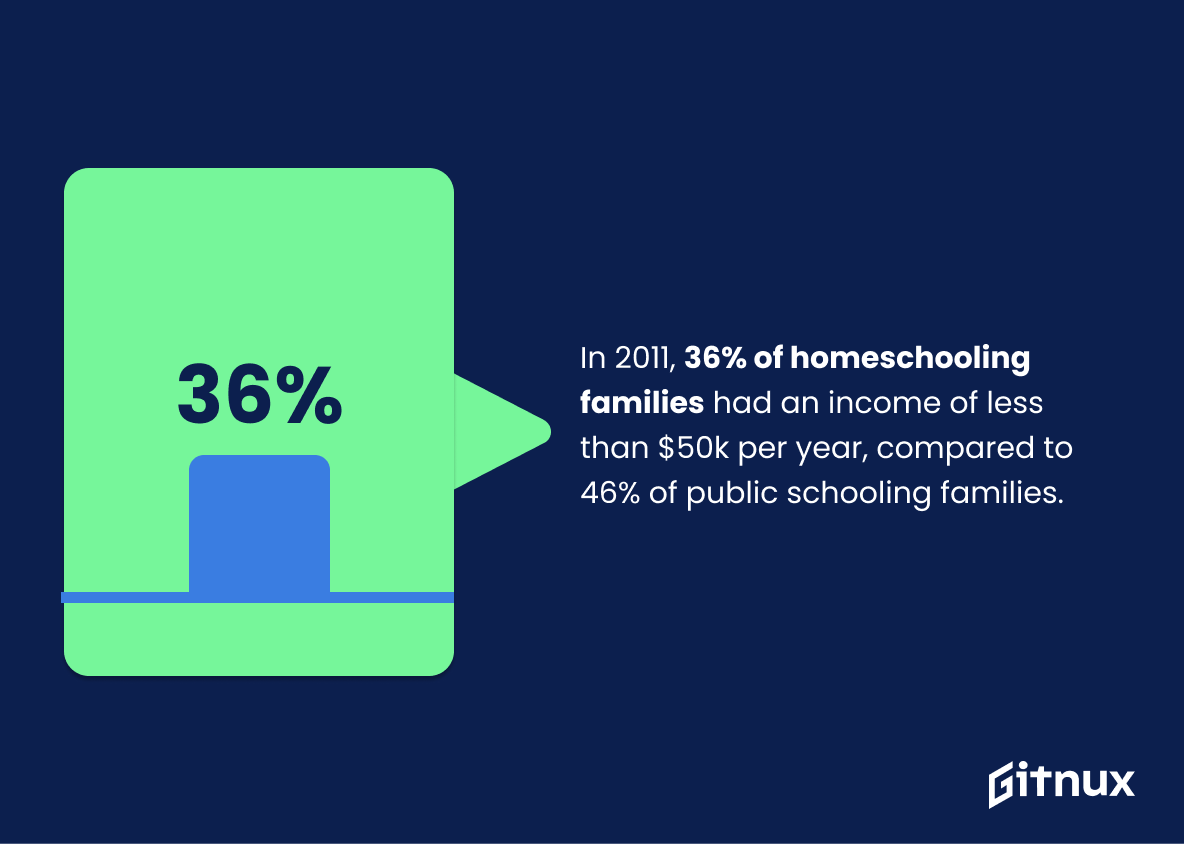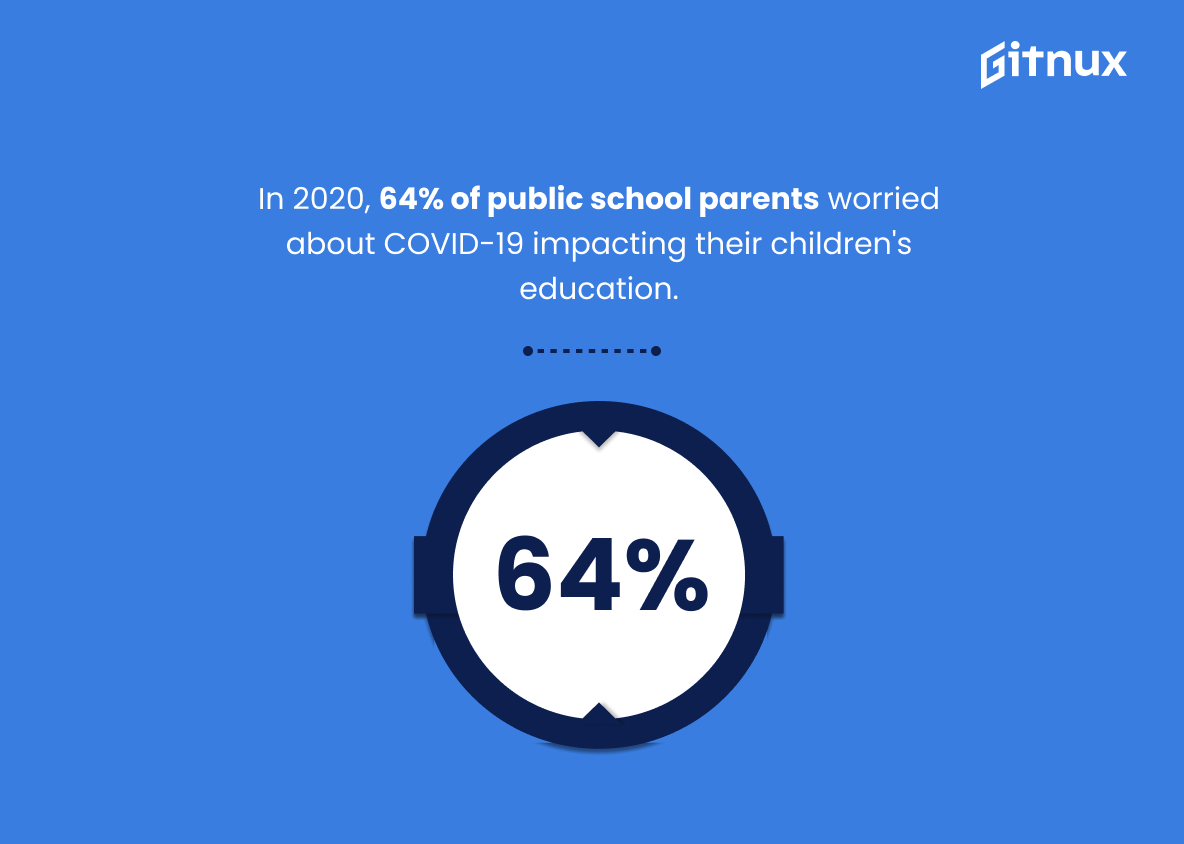Navigating the wide world of education for your child can often feel like stepping into an overwhelming galaxy of choices. Two major contenders in this educational space are traditional public schools and homeschooling. These two avenues offer contrasting learning environments, each with its own unique merits. The conflict between public school and homeschooling has been a topic of intense debate. But, how does one conclude which path is optimal?
This blog post will dive into the raw data, presenting a comprehensive comparison between public school and homeschool statistics, paving the way for parents to make an informed decision tailored to their child’s needs. Let’s delve into the numbers, assess the educational terrain, and help you make a choice grounded in solid facts rather than mere opinions.
The Latest Public School Vs Homeschool Statistics Unveiled
About 3.3% of U.S students were being homeschooled in 2016, up from 1.7% in 1999.
In the dynamic discourse surrounding Public School Vs Homeschooling Statistics, this particular data point serves as a compelling piece of the puzzle. When we ponder upon the rise from 1.7% in 1999 to 3.3% in 2016, we uncover a trend that can’t be ignored – more and more U.S students are veering off the conventional path of public schooling and embracing homeschooling. It adds depth to the discussion by affirming the increasing popularity of homeschooling, thus challenging the long-held dominance of public schools in the U.S education system.
In 2011-2012, 91% of parents homeschooling their children did so due to a concern about the environment of other schools.
Highlighted in this intriguing facet of homeschooling data from 2011-2012, we find a major driving factor behind the decision for parents to homeschool their children: concern for the environment of other schools. Dissecting this piece of information, possible inferences surrounding the debate between public schools versus homeschooling can be painted in a more comprehensive light.
From the viewpoint of these parents, the traditional school environment appears to harbor significant worries or pitfalls. This amplifies the homeschooling preference, suggesting a perceived superiority, at least in terms of safety, morale, and perhaps even the quality of education. Keeping this statistic at the forefront while examining the contrast between public school and homeschooling figures will undoubtedly add depth to the discussion and strengthen the analysis on the factors influencing the homeschooling choice.
Approximately 4% to 6% of U.S. students are homeschooled, with an increase of 2% to 8% annually.
Unlocking the depth of this data, we journey into a significant trend in the educational landscape – the growth of homeschooling. Examining the notable 4% to 6% U.S students who are homeschooled, we uncover a fascinating divergence from traditional public schooling. But that’s not all, the story doesn’t end here. Each year, the ranks of these homeschoolers swell an additional 2% to 8%, suggesting a dynamic shift in education preferences.
In the realm of public school vs homeschool debate, this statistic emerges as a potent narrative, encapsulating the burgeoning appeal and popularity of homeschooling. So, thus, it is undeniably an indispensable part of any analysis or blog post on the subject.
According to a National Center for Education Statistics report, as of 2016, approximately 3 million K-12 students were being homeschooled.
In shedding light on the comparison between public school and homeschooling statistics, the evidence from the National Center for Education Statistics is a pivotal puzzle piece. As of 2016, the homeschooling tribe has swollen to about three million K-12 students. This revelation underlines not only the significant presence of homeschooling as an educational choice across the nation, but also calls for an in-depth examination of this evolving trend.
Clearly, homeschooling is no longer a fringe concept but a rising influence on K-12 education, challenging the traditional public schooling model in unforeseen ways. This uncovered statistic adds an informed perspective to our discourse on public vs. homeschooling, implicating vast implications for educators, learners, and policymakers. Undoubtedly, this provides a solid stepping-stone for more nuanced discussions and comprehensive comparisons to unfold.
Public school students typically spend approximately 6.5 hours a day in school, while homeschooled students spend around 2.5 to 3.5 hours a day.
Drawing a comparison to this statistical snapshot offers key insights into the widely varying educational models of public school and homeschooling. The notable disparity in the number of hours spent provides a glimpse into how learning time is utilized in each setting. The extended timeframe within public schools generally includes social, physical, and extracurricular engagement, in addition to academic learning.
On the other hand, homeschooling, by offering a concentrated dose of home-based education, focuses more on individualized instructions, thus requiring fewer instructional hours. This statistic paints a vibrant picture of the differences and potential impact of these two learning methods on a student’s day, offering an informative backdrop for understanding and discussing the academic and lifestyle implications of public schooling versus homeschooling.
According to 2019 data, 8.1% of homeschooled students attend school less than 5 hours a week, while the majority of public school students attend school for over 30 hours a week.
Drawing attention to the stark contrast between the weekly educational hours of homeschooled versus public school students, this statistic serves as an intriguing pivot point in the discussion of Public School Vs Homeschool Statistics. It indicates an impressive variability in the allocation of structured learning time between these two educational paths. While public schoolers engage in learning activities for over 30 hours a week, just over eight out of a hundred homeschooled students partake in less than a fifth of this time.
This discrepancy might cause some to question if the former group is overburdened or whether the latter may not be receiving enough instructional time. Thus, in the grand dance of weighing the benefits and limits of each model, this statistic twirls a tantalizing detail into the mix, prompting readers to ruminate more deeply on the quality, quantity, and effectiveness of educational time in each setting.
Homeschooled students tend to perform better academically. On average, homeschool students are in the 87th percentile, while public school students are in the 50th percentile.
Unfolding the essence of academics across various educational models, this statistic establishes an intriguing comparison, casting light on distinct performance discrepancies. From a bird’s eye view, accounting for the average performance, homeschooling curriculums cultivate an environment where students are, on an average, escalating high in the 87th percentile. Reversely, the students navigating the public school courses levitate around the 50th percentile.
As the blog post navigates the complex terrain of Public School Vs Homeschool Statistics, this statistic interweaves a compelling narrative, underscoring an essential point of divergent academic performances across the two educational approaches. Ultimately, it adds a quantifiable angle to our discussion, enriching the reader’s understanding of which path might be beneficial according to academic outcomes.
A study found that homeschooled students typically lack the same level of social skills as public school students, due to less interaction with peers.
Illuminating the realm of homeschooled students’ social skills, this study shows a divergence between their abilities and those of public school students, a key point that merits our attention in the discourse of Public School vs Homeschool Statistics. The inference drawn here adds depth to the post by shedding light on the possible consequences of reduced peer-to-peer interaction in homeschooling, a consideration as important as academic success when choosing the best educational path for a child.
In 2011, 36% of homeschooling families had an income of less than $50k per year, compared to 46% of public schooling families.
Delving into a vivid comparison between public school and homeschool populations, this statistic provides an insightful snapshot of the economic landscape underpinning these educational choices. It reveals that, in 2011, a smaller percentage of homeschooling families were operating under a yearly income of less than $50k, relative to their public school counterparts. Essential in decoding the socioeconomic patterns, this data point offers illuminating context on how income levels potentially influence the decision-making process on educational pathways.
The divergence in statistics can open up discussions on possible factors such as affordability, access to information, and resources influencing families’ choice of education. Unfolding such a panorama, the statistic in question, undoubtedly, introduces a vibrant thread to the tapestry of hard data that sews into the greater narrative of homeschooling versus public schooling dynamics.
In 2020, 64% of parents with children in public schools expressed concern about their children falling behind during the COVID-19 pandemic.
Delving into the narrative of public school versus homeschooling statistics, the highlighted statistic offers an intriguing subplot. In 2020, a meaningful 64% of parents with children in public schools had anxieties about their kids’ academic regression in the pandemic’s adversity, as a reaction to potential education gaps.
This figure reveals a critical insight into a potentially shifting educational sentiment, fomenting a closer examination of alternatives like homeschooling. Acknowledging the fact that parents are the main protagonists in the education story of their children, their increased concern within the public school arena signifies a crucial juncture. The digital world increasingly points towards innovative learning methods, and this statistic implicitly suggests that homeschooling might emerge as a competing hero in this unfolding narrative.
Therefore, whether homeschooling can pose a viable solution to ward off similar concerns in any future disruptions, becomes an interesting arc to explore further, enriching the context of the blog post. Parents’ concern depicted by this statistic acts as a catalyst, igniting a thorough comparison between public school and homeschooling, and potentially reshaping the education discourse.
Homeschooled students score about 72 points higher than the national average on the Scholastic Aptitude Test (SAT).
Illuminating the competitive landscape between public schools and homeschooling, this notable statistic oozes relevance. With homeschoolers outstripping the national average for SAT scores by a substantial 72 points, this nugget of data serves as a testament to the potential potency of personalized, flexible education.
Of course, it’s not a universal guarantee – individual results often vary dramatically – yet it certainly reinforces the argument that homeschooling can be a strong contender in the academic arena. Thus, it invites a deeper exploration and robust debate about the pros and cons of each educational pathway in the blog post. This empowering statistic challenges readers to question traditional assumptions about the supremacy of public schooling over homeschooling.
It’s estimated that homeschooling grew by between 2.5 and 3.7 million students in the spring semester of 2020.
Highlighting this statistic propels our understanding of the shifting dynamics in the education sphere, casting a spotlight on the escalating numbers embracing homeschooling. Caught within the throes of the Spring 2020 semester, it underlines the amplitude of the shift from traditional public school education towards homeschooling.
In the grand chessboard of public schooling versus homeschooling, these figures serve as a worthy opponent, commanding attention, adroitly challenging the prevalent norms, and potentially redefining the course of future education trends. Placed within the context of this blog post, it offers a compelling narrative on the contest between public schools and homeschooling, inviting readers to delve deeper into why this significant surge in homeschooling may be occurring.
Up to 31% of homeschooled students are in grades 9-12, compared to 25% of public school students.
Shedding light on the proportion of students in specific grades among homeschooled and public school populations, this statistic presents intriguing insights when considering public school and homeschool dynamics. It underscores the increased preference for homeschooling during the critical high school years (grades 9-12), with up to 31% of homeschooled students falling into this category compared to 25% in public schools.
This is a compelling point for discussion in our blog post as it could be reflective of various influencing factors such as parental concerns about quality of education, social environment, or preparation for college among older students. Unearthing the reasons behind this discrepancy could help inform future educational decisions and strategies.
Approximately 84% of homeschooled students today are white, while public schools are more diverse with 49% white, 26% Hispanic, 15% black and 5% Asian.
This captivating percentage – nearly 84% of homeschooled students being white – unfolds a vivid story about the demographic landscape in homeschooling versus public schools. It turns the spotlight on the significantly less diversity that homeschooling presents compared to public schools, where the demographic mix is considerably more varied with 49% white, 26% Hispanic, 15% black, and 5% Asian.
This intriguing juxtaposition paints a picture that contributes key insights to the debate of Public School Vs Homeschool Statistics, emphasizing the sociocultural factors that may influence education choices and experiences.
68% of homeschoolers go on to attain some form of higher education, compared to 59% of public school students.
Painting an intriguing picture from the realm of education statistics, this compelling piece of data unveils a noteworthy differential in the pursuit of higher education between homeschoolers and public school students. Unmistakably, the larger draw of higher education amongst the homeschooling community, inferred by the 68%, defies common stereotypes and prompts reflection on the efficacy of this alternative form of education.
Honestly, this discrepancy in figures – 68% compared to 59% – has the power to reboot narrative perspection, pushing readers to reconsider preconceived notions about homeschooling’s ability to prepare students for higher education.
Moreover, it quietly underscores the statistical significance of home-based instruction, which stands a crucial testament in the ongoing discourse of public school vs homeschooling. So, in the grand scale of ‘education’ canvas, this statistic is far from a mere number. It’s a formidable emissary of the homeschool world, inciting pivotal dialogue and impacting opinions by offering an unexpected, valuable perspective.
During the 2015-16 school year, black students represented 28% of school-related arrests in public schools, compared to negligible arrests among homeschool students.
Drawing attention to this enlightening statistic highlights a significant disparity within the arena of public education versus homeschooling. One cannot simply ignore the arresting revelation that, in the 2015-16 academic year, black students constituted 28% of all school-related arrests in public schools, an amount quite pronounced when juxtaposed with the barely existent rate among their homeschooled counterparts.
This striking difference underscores the disparities in disciplinary tactics, thereby spotlighting the urgent need for systemic reform in public schools. Moreover, it intimates benefits of homeschooling environments, possibly spurring parents and policymakers to lean toward alternative methods of education. This statistic brilliantly illustrates these elements and imparts an informative benchmark in the ongoing comparison of public schooling and homeschooling.
Roughly 27.3% of homeschooled students participate in 8 or more community activities, compared to 17% of public schooled students.
Diving into the realms of this insightful statistic, we can unearth a captivating and significant narrative in the debate of Public School Vs Homeschool Statistics. Capturing the essence of community involvement, this figure illustrates a higher tendency of homeschooled students, precisely 27.3% of them, to engage in eight or more community activities in stark contrast to their counterparts in public schools – a mere 17% of whom follow suit.
The story this statistic narrates speaks volumes about the potential for homeschooled students to step outside classroom boundaries, offering them an enriched arena of opportunities for social engagement. This not only breaks the stereotype of homeschooled students being socially isolated, but it paints a vibrant picture of their active role within the community.
This comparison becomes a compelling piece of evidence in the homeschool versus public school puzzle highlighting the different learning environments’ influences on students’ interaction with the outside world. Undoubtedly, this striking contrast in community participation is a relevant piece that contributes to a more nuanced understanding in the extensive discussion of public school vs homeschool statistics.
Conclusion
In wrapping up this comparison of public schools and homeschooling, it’s crucial to remember that statistics only tell part of the story. The most suitable schooling option depends heavily on individual family needs, student learning styles, and various other personal factors. The statistics suggested that homeschooling can provide incredible results in academic achievement, while public schools offer a broader social experience and unique resources.
It’s about striking a balance and finding the best fit for your child’s educational journey. Remember, whether it’s public school or homeschooling, the central aim is to facilitate an environment where your child can thrive, learn, and grow into a well-rounded adult.
References
0. – https://www.classroom.synonym.com
1. – https://www.responsiblehomeschooling.org
2. – https://www.www.washingtontimes.com
3. – https://www.nces.ed.gov
4. – https://www.www.pbs.org
5. – https://www.www.ncbi.nlm.nih.gov
6. – https://www.www.nheri.org
7. – https://www.www.hslda.org
8. – https://www.www.edchoice.org
9. – https://www.www.niche.com
10. – https://www.www.edweek.org
11. – https://www.www.pewresearch.org
